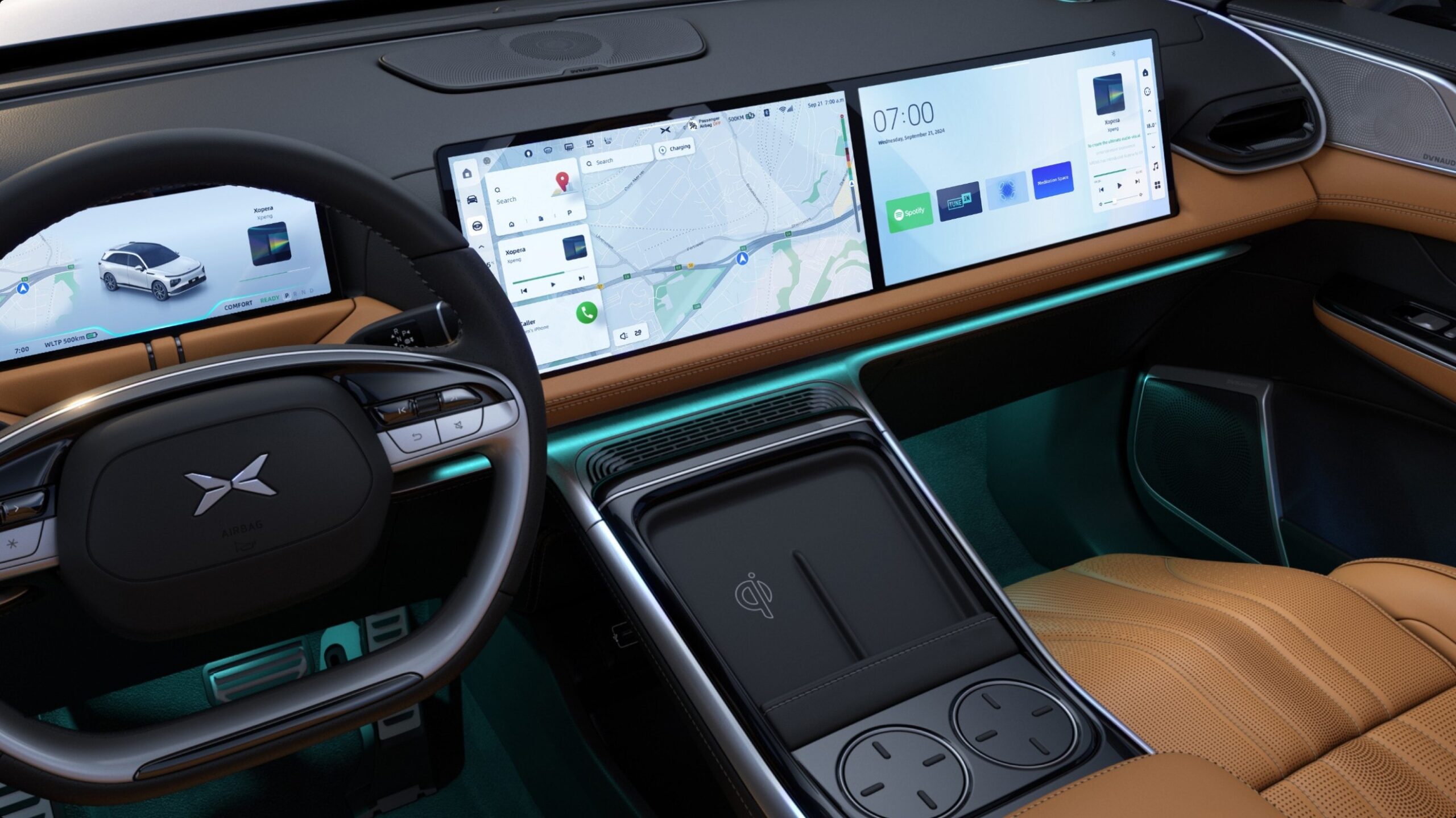How will 5G affect the automotive industry in 2025?
Enhanced connectivity and infotainment
5G networks allow cars to communicate faster and more reliably with other vehicles, infrastructure and devices. This opens the door to a wide range of improvements in connectivity and infotainment.
- Real-time data traffic: the extremely low latency of 5G makes it possible to exchange data almost instantaneously. This allows cars to share traffic information, weather conditions and even warnings of obstacles before the driver perceives them.
- Richer infotainment experiences: passengers benefit from streaming services in 4K, augmented reality (AR) navigation and cloud-based applications. This increases comfort and entertainment value during long drives.
Latency, what is that?
Latency, or latency, refers to the delay that occurs between sending and receiving data. In the context of networks, such as 5G, it measures the time it takes for a signal to travel from one location to another, and back. In 5G, latency is extremely low, often less than 1 millisecond. This is essential for applications such as autonomous driving, where decisions must be made in fractions of a second to ensure safety. Low latency allows vehicles to react faster to changing conditions, improving the reliability and efficiency of advanced functions such as real-time traffic information and collision alerts.

The key to autonomous driving
Autonomous driving needs a reliable infrastructure in which vehicles can communicate with each other quickly and safely. This is where 5G plays a crucial role:
- Vehicle-to-everything (V2X) communications: 5G enables vehicles to communicate with each other and with infrastructure. Think direct connections to traffic lights, smart roadside sensors and other vehicles.
- Real-time updates: autonomous vehicles can continuously update HD maps and traffic information with 5G, which is crucial to ensure the safety and accuracy of autonomous driving.
- Faster decision-making: low latency allows autonomous systems to make decisions faster, significantly reducing the risk of accidents.
Greater road safety
One of the most immediate benefits of 5G is the increase in road safety. By connecting vehicles and infrastructure, accidents and hazards can be prevented more quickly:
- Collision alerts: vehicles can warn each other of sudden braking or hazards outside the driver’s view.
- Smart traffic management: by connecting to traffic lights and other infrastructure, vehicles can navigate cities more efficiently, reducing congestion and stress.
- Emergency response: 5G enables cars to automatically call emergency services and share detailed information about the location and situation.
More efficient fleet management
For companies with large fleets, 5G offers huge management and maintenance benefits:
- Predictive maintenance: sensors in vehicles can detect potential problems before they actually occur, allowing companies to schedule repairs more efficiently.
- Real-time tracking: companies can track vehicles more accurately, leading to better logistics planning and on-time deliveries.
- Cost savings: thanks to optimization and preventive maintenance, operational costs decrease.
The rise of Mobility-as-a-Service (MaaS)
Mobility-as-a-Service, offering mobility on a subscription basis, is growing rapidly. 5G is accelerating this transition by providing the technological foundation:
- Seamless integration: different means of transportation, such as shared cars, electric scooters and public transportation, can be easily linked in a single platform thanks to 5G.
- Smart payments: contactless and automated payments become more reliable and faster thanks to 5G, improving the user experience.
- Autonomous public transportation: with the support of 5G, autonomous buses and shuttles can operate more efficiently.
Smart cities and infrastructure
The integration of 5G in smart cities has direct benefits for the automotive industry. Connecting vehicles and infrastructure creates new opportunities:
- Automated tolling: cars can pay tolls automatically without drivers having to stop.
- Integration with energy networks: electric vehicles can communicate with smart energy networks, enabling bi-directional charging and dynamic pricing.
- Smart parking solutions: thanks to 5G, drivers can easily find free parking spaces through real-time data.
Challenges and limitations of 5G in the automotive industry
While 5G offers tremendous benefits, there are also challenges that the automotive industry must consider:
- Cost: implementing 5G hardware in vehicles and infrastructure is expensive. Not all automakers or regions can bear these costs in the short term.
- Security: increased connectivity increases the risk of cyber attacks. It is essential that vehicles and systems are properly secured.
- Infrastructure deployment: although 5G networks are growing rapidly, they are not yet fully available everywhere. This may delay the adoption of 5G-dependent technology.
The future of mobility with 5G
By 2025, 5G has already greatly transformed the automotive industry, but this is just the beginning. With continued innovations in connectivity and automation, 5G will continue to contribute to safer, more efficient and comfortable transportation. For consumers and businesses alike, this means an exciting and promising future for mobility. From enhanced safety to the growth of autonomous driving and smart cities, 5G is setting the stage for a new era in the automotive industry.

